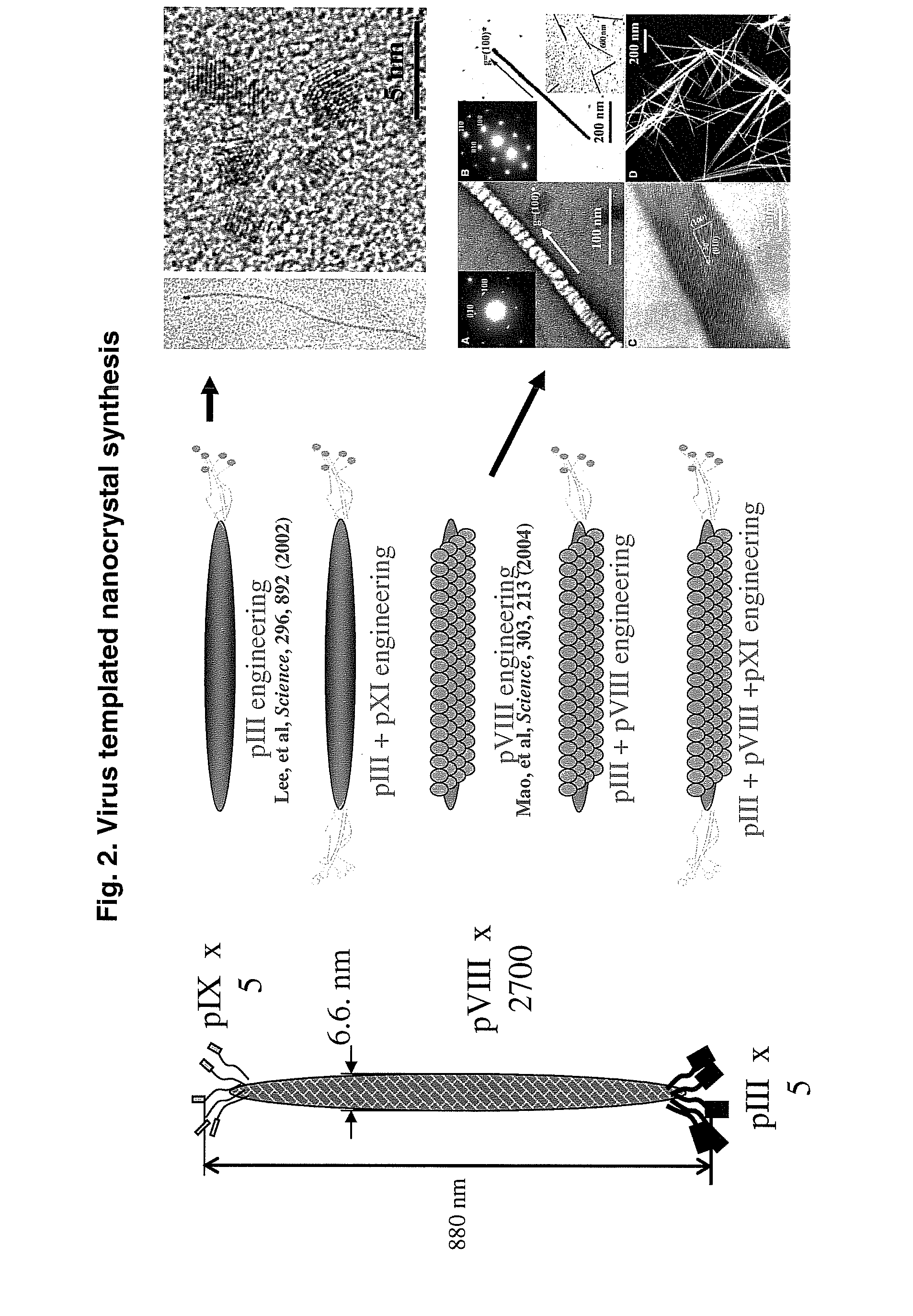Hydroxyapatite-binding peptides for bone growth and inhibition
a technology of hydroxyapatite and peptides, which is applied in the direction of peptide/protein ingredients, prosthesis, drug compositions, etc., can solve the problems of limited understanding of the role of specific protein motifs, and the hinderance of direct incorporation of protein matrices into functional building blocks by encrypted peptide chains, etc., to achieve the effect of inhibiting mineral growth
- Summary
- Abstract
- Description
- Claims
- Application Information
AI Technical Summary
Benefits of technology
Problems solved by technology
Method used
Image
Examples
example 1
Phage Display to Identify Sequences that Bind to Hydroxyapatite
[0081]In order to identify the short peptide specific binding motifs, phage display was performed against the single crystal HA surface. Procedures known in the art were used for phage display. The basic procedure used for phage display selection is schematically shown in FIG. 1, Panel A, which in brief shows, a combinatorial library subjected to biopanning or bioselection after interaction with the target HA crystals, elution, bacterial amplification, DNA analysis and repeating the process for enrichment of sequences that bind the target. The procedures for synthesis of the single crystalline HA crystals are described below. The biopanning procedure is also described in this Example.
[0082]The combinatorial library comprises M13 phage having genetically altered proteins featured at the pIII units. Equal amount of three different types of phage library suspensions, 7-mer, 7-mer constrained, 12-mer (Ph.D.-7, Ph.D. c7c, and...
example 2
Binding Affinity of Identified Sequences to Hydroxyapatite
[0089]Binding peptides against the polycrystalline HA, which has crystallographically impure surfaces, were also obtained. The selected binding peptide, SEQ ID NO: 264, having the sequence, Tyr-Met-Gly-Phe-Tyr-Ala-Pro-Arg-Phe-Pro-His-Tyr, (Poly 3) was also screened and compared with two single crystalline dominant HA binding sequences named single 14 and 15 using two binding assays. The sequences of the other peptides are Asn-Tyr-Pro-Thr-Leu-Lys-Ser (SEQ ID NO: 200, W4a-4-14, Single 14) and Asn-Pro-Tyr-His-Pro-Thr-Ile-Pro-Gln-Ser-Val-His (SEQ ID NO: 208, W4a-4-15, Single 15) and WILD type phage, which does not have an inserted peptides unit. A constrained single 14 peptide (SEQ ID NO: 267) having two cysteines, one on each end, was used.
[0090]As described in Example 1, 4 mg of single crystalline HA was freshly etched to remove carbonated contaminates and incubated with 1×1010 pfu of phage of constrained W4a-4-14 (Single 14), ...
example 3
DNA Analysis of Hydroxyapatite-Binding Sequences
[0094]Plaque amplification was carried out according to the New England BioLabs, Inc. Ph.D.-12™ Phage Display Peptide Library Kit, Catalog #E8110S, version 2.7, pg. 12-13, as follows: (1) Dilute the ER2738 overnight culture 1:100 in LB. Dispense 1 ml diluted culture into culture tubes, one for each clone to be characterized. 10 clones from the third round are often sufficient to detect a consensus binding sequence. (2) Using a sterile wooden stick or pipet tip, stab a blue plaque and transfer to a tube containing diluted culture. Important: pick plaques from plates having no more than ˜100 plaques. This will ensure that each plaque contains a single DNA sequence. (3) Incubate tubes at 37° C. with shaking for 4.5-5 hours (no longer). (4) Optional. In addition to sequencing individual clones, the entire pool of selected phage can be sequenced. This can yield a consensus binding sequence in a single step, but only if the common sequence e...
PUM
| Property | Measurement | Unit |
|---|---|---|
| lengths | aaaaa | aaaaa |
| pH | aaaaa | aaaaa |
| weight ratio | aaaaa | aaaaa |
Abstract
Description
Claims
Application Information
 Login to View More
Login to View More - R&D
- Intellectual Property
- Life Sciences
- Materials
- Tech Scout
- Unparalleled Data Quality
- Higher Quality Content
- 60% Fewer Hallucinations
Browse by: Latest US Patents, China's latest patents, Technical Efficacy Thesaurus, Application Domain, Technology Topic, Popular Technical Reports.
© 2025 PatSnap. All rights reserved.Legal|Privacy policy|Modern Slavery Act Transparency Statement|Sitemap|About US| Contact US: help@patsnap.com



